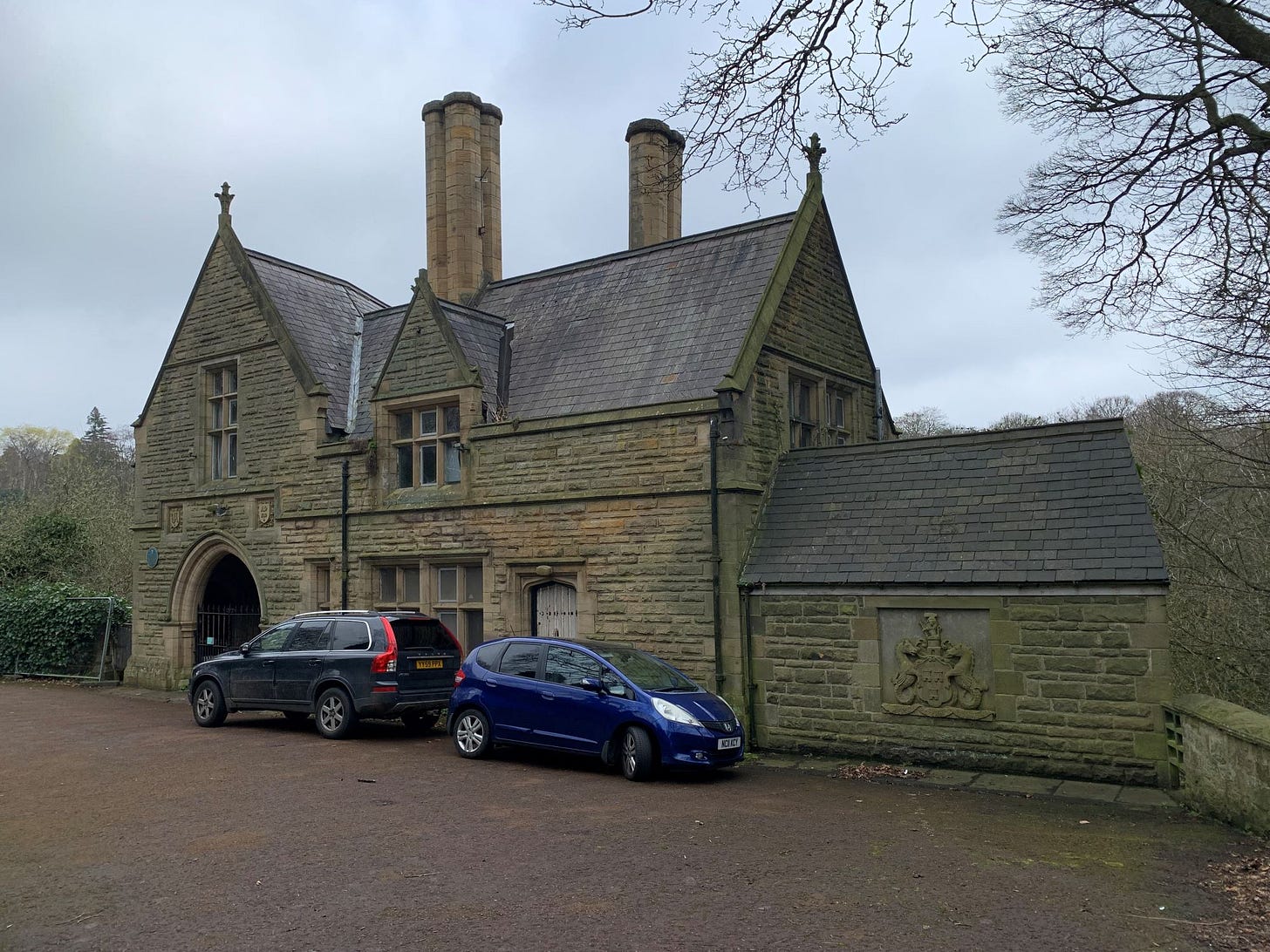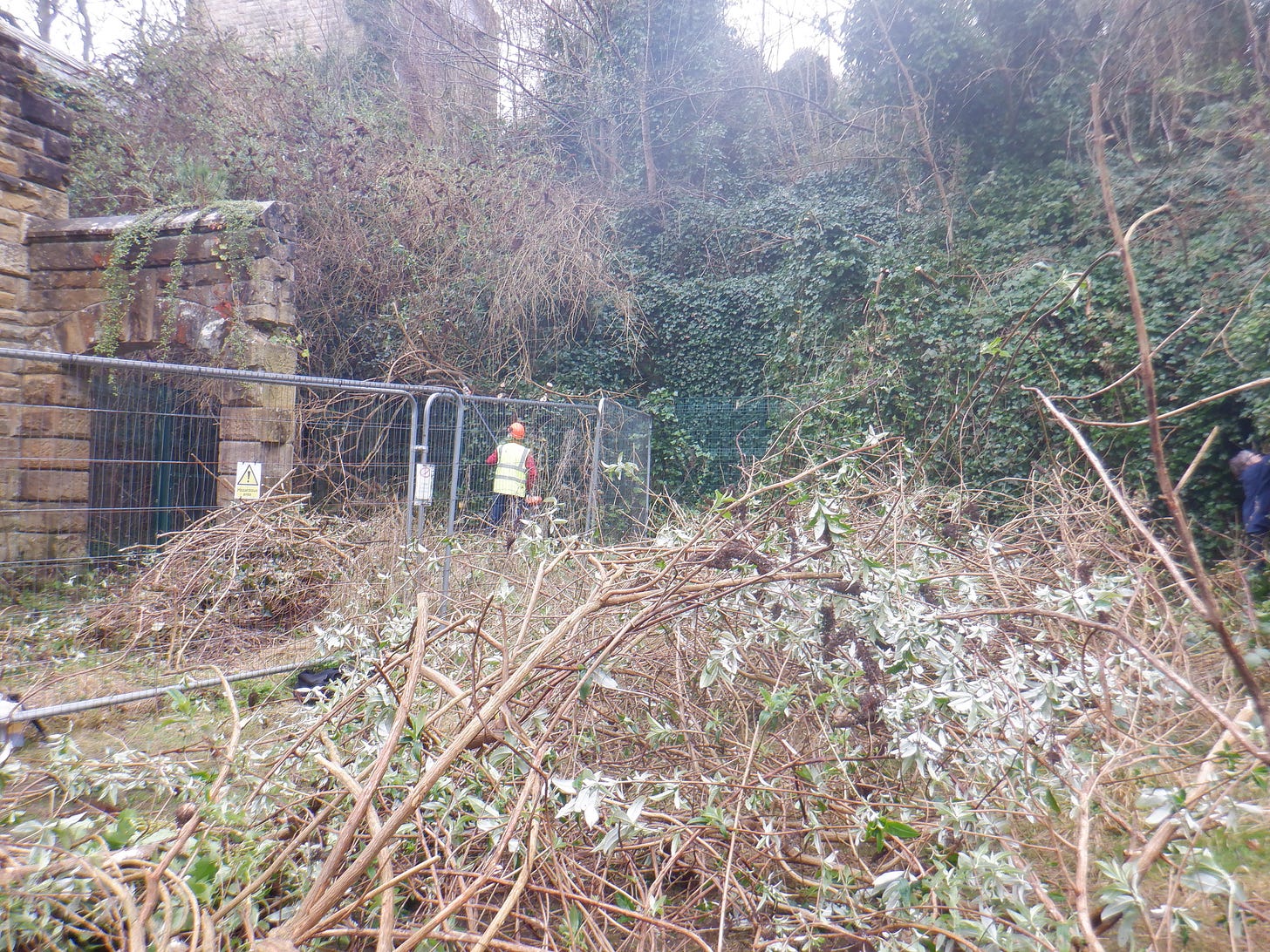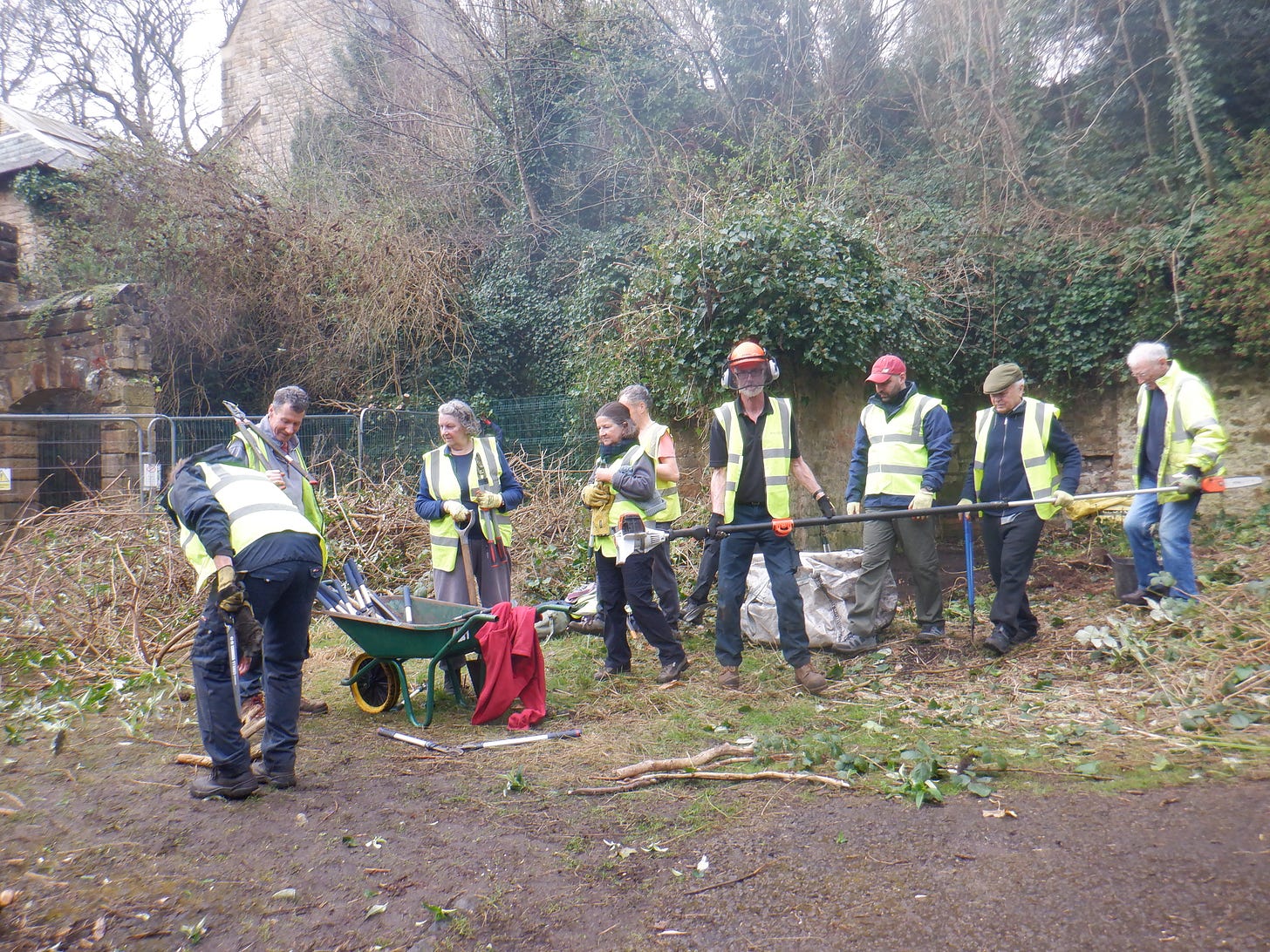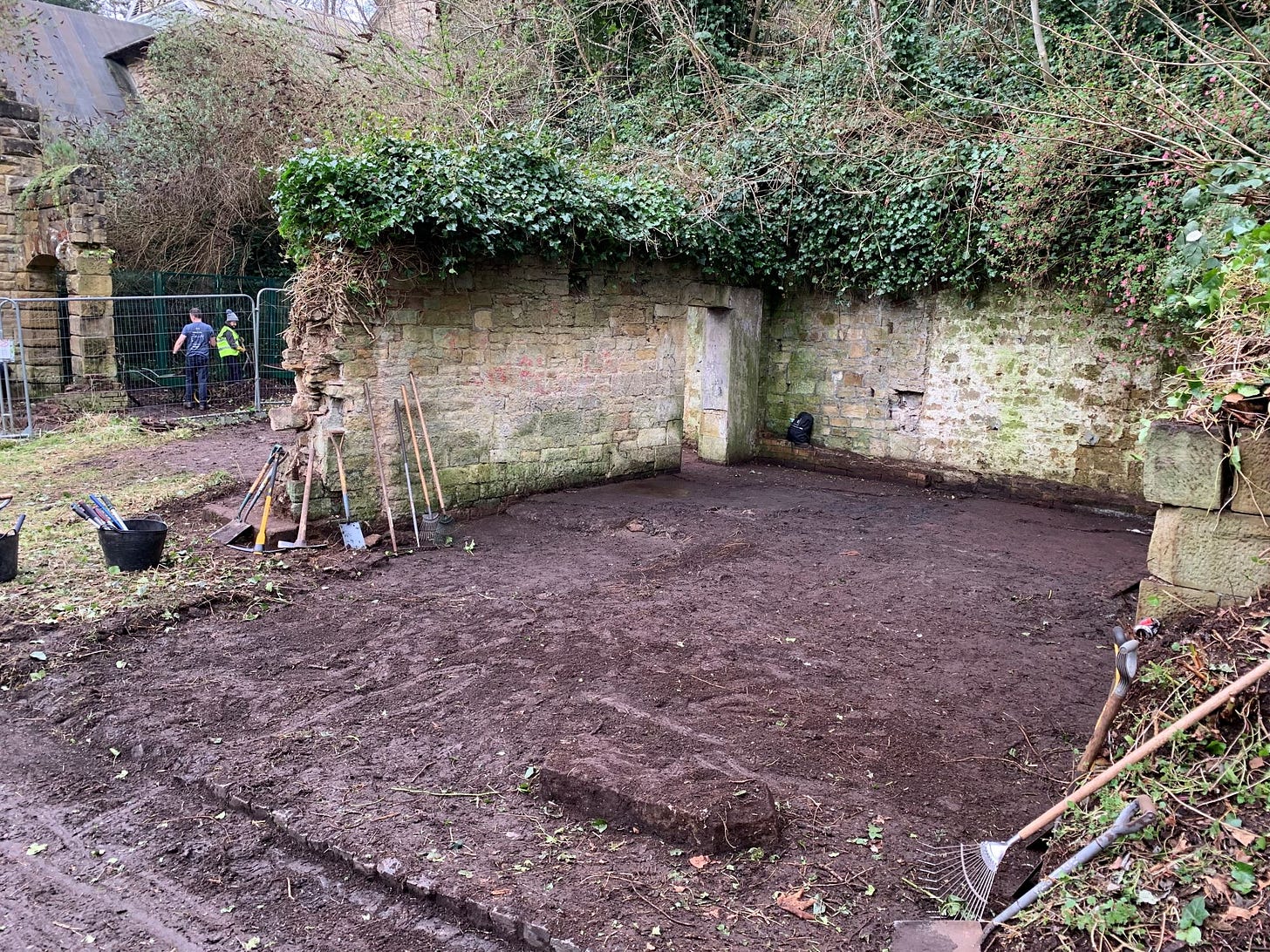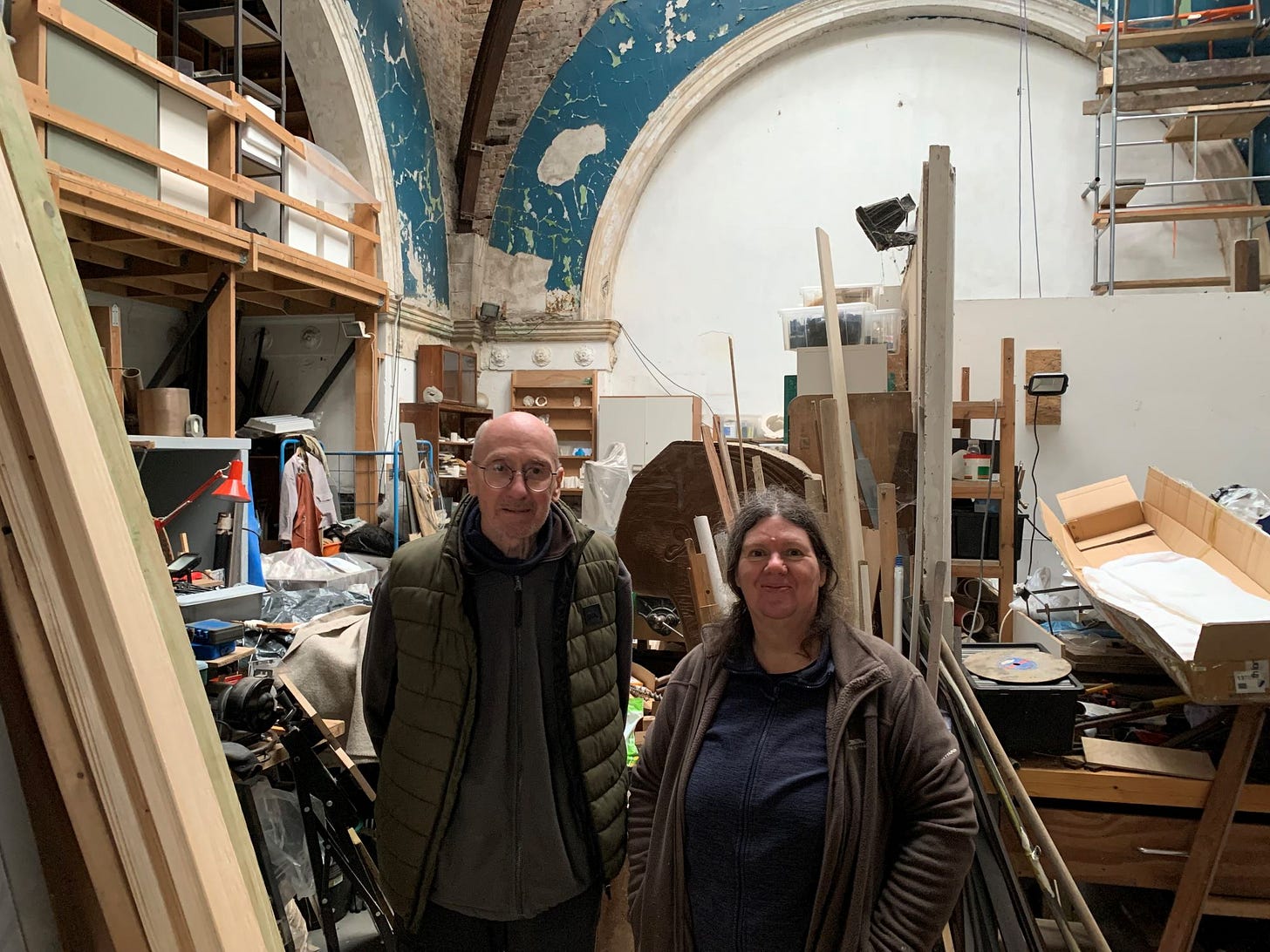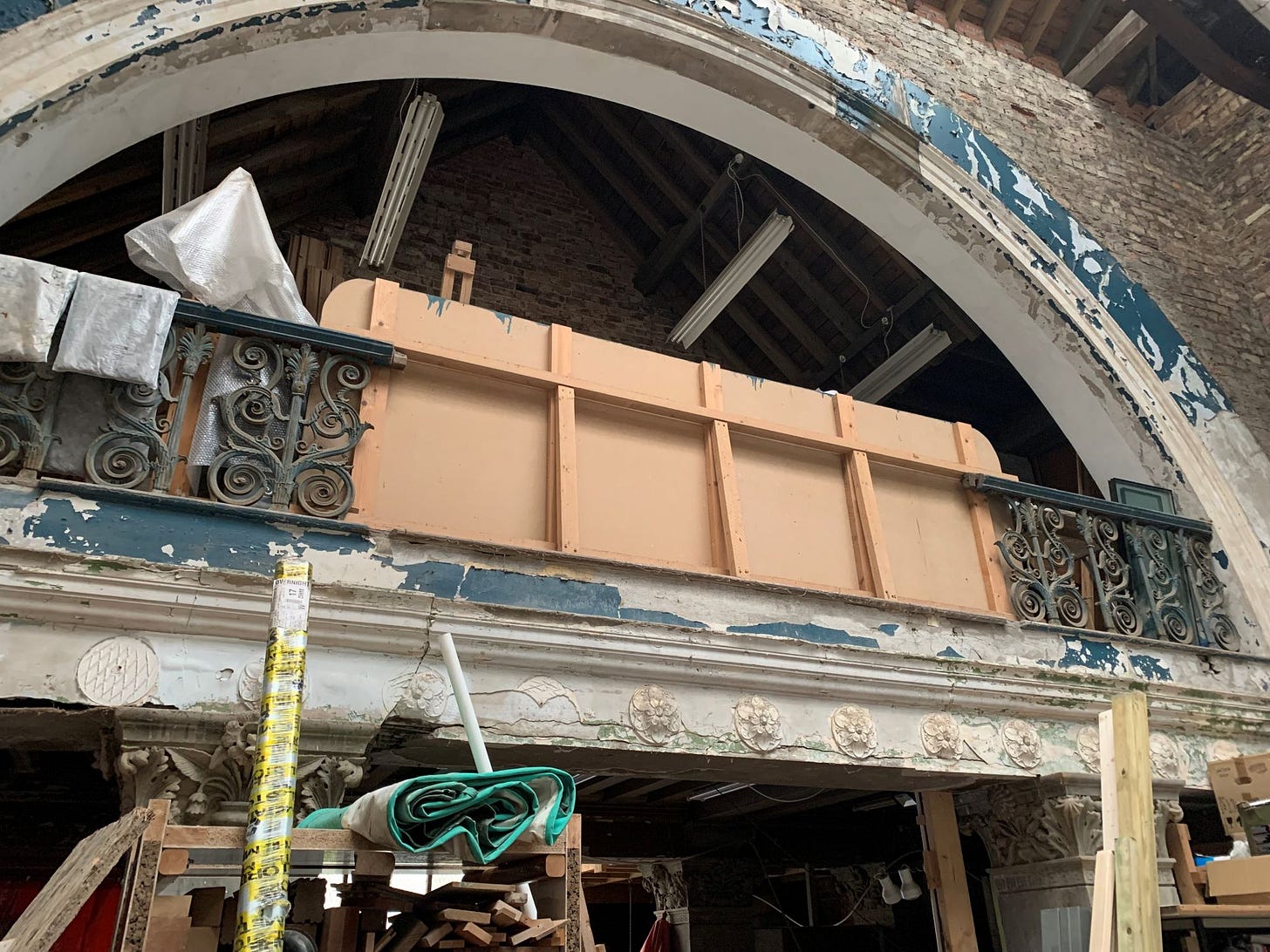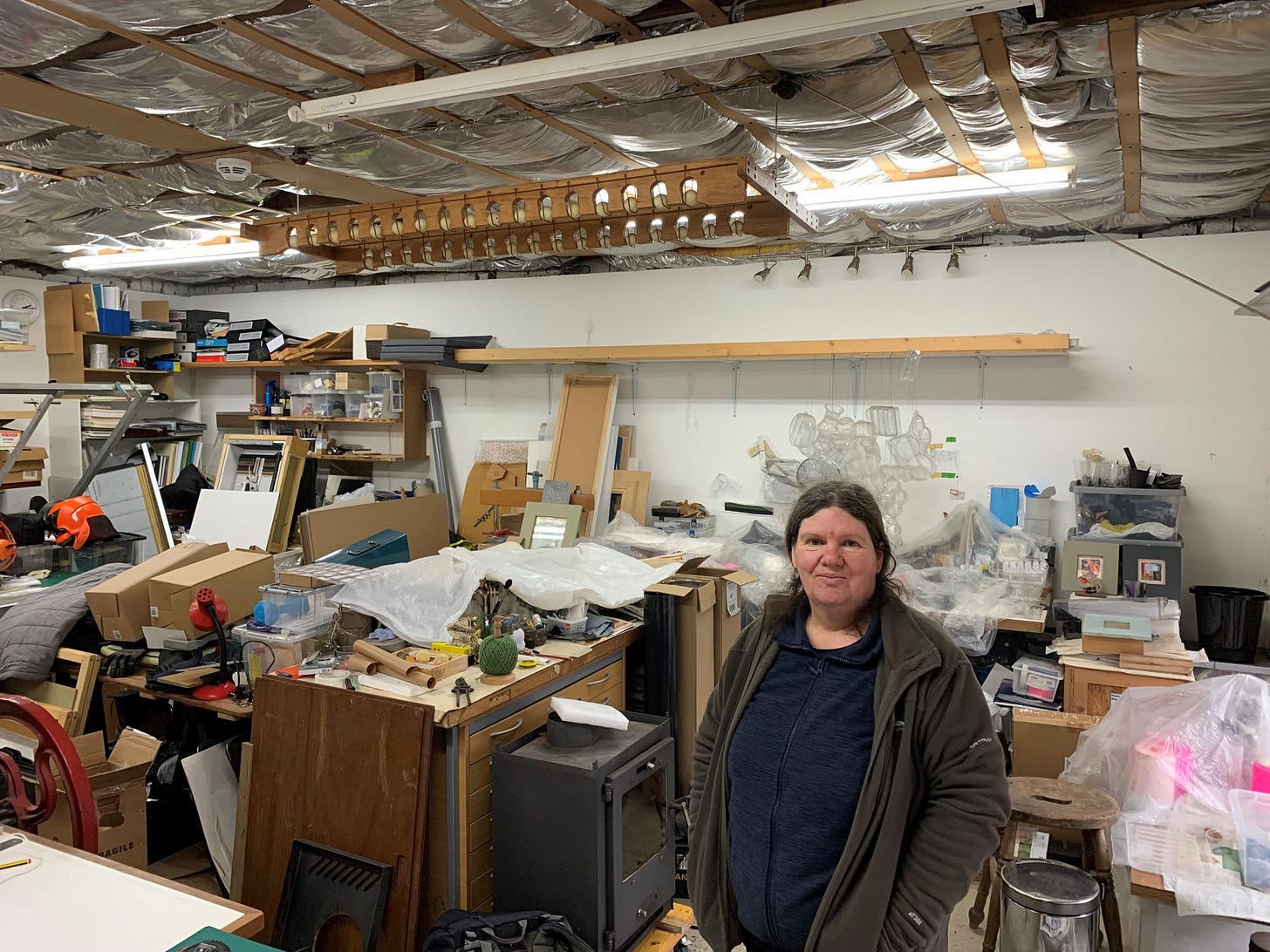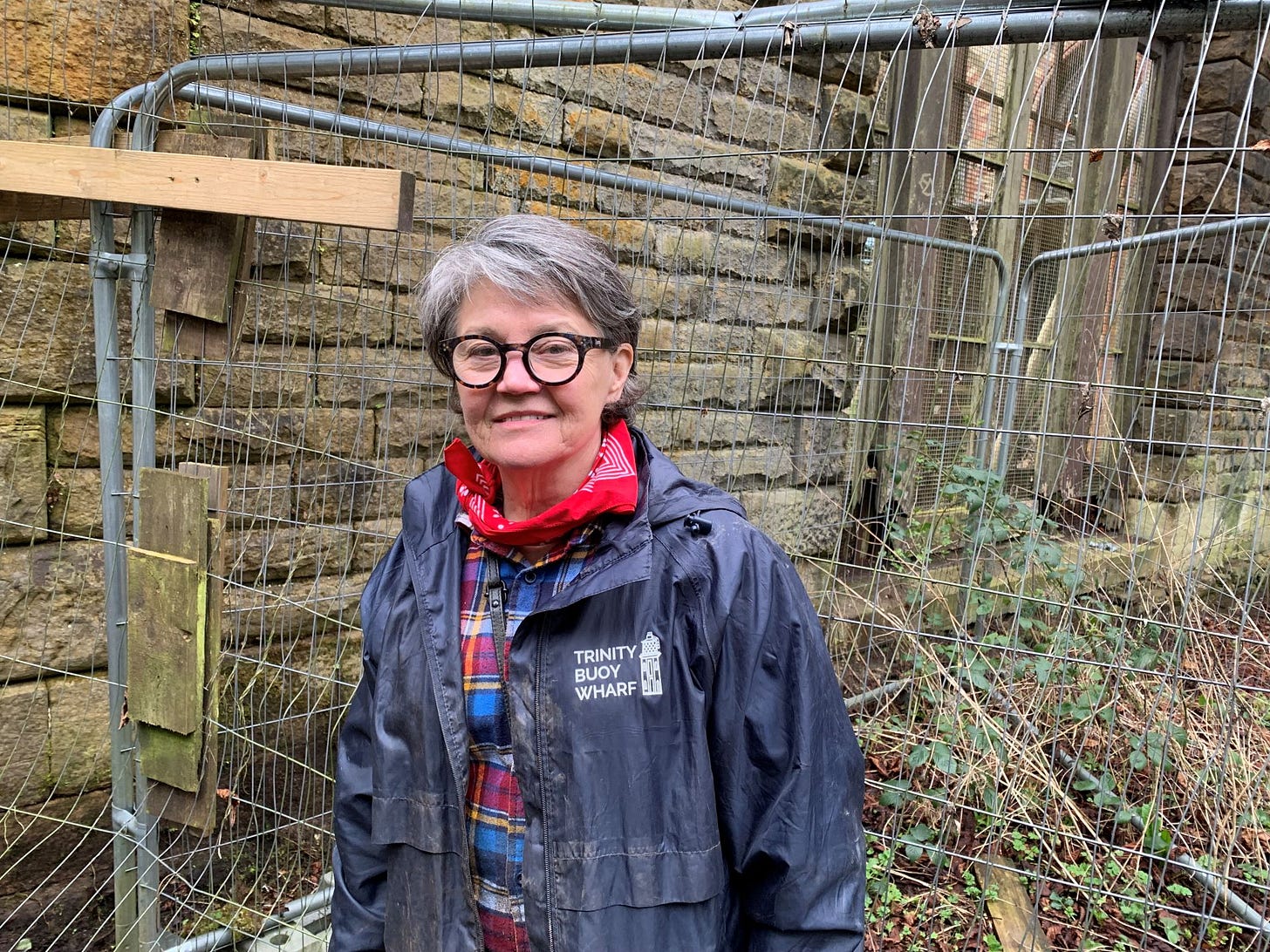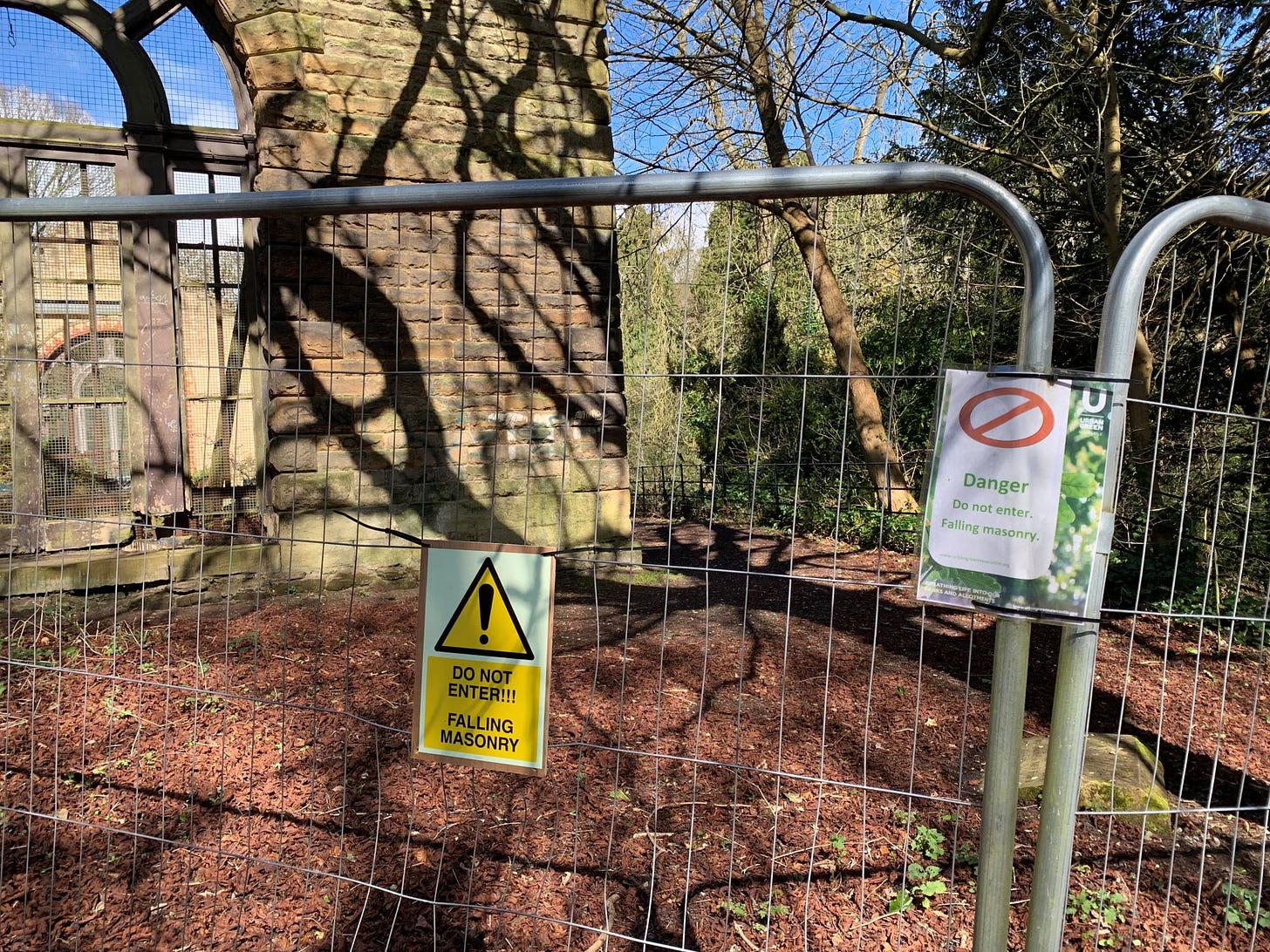Weeds gone so what now for Jesmond Dene landmark?
Lord Armstrong’s Banqueting Hall captures the imagination
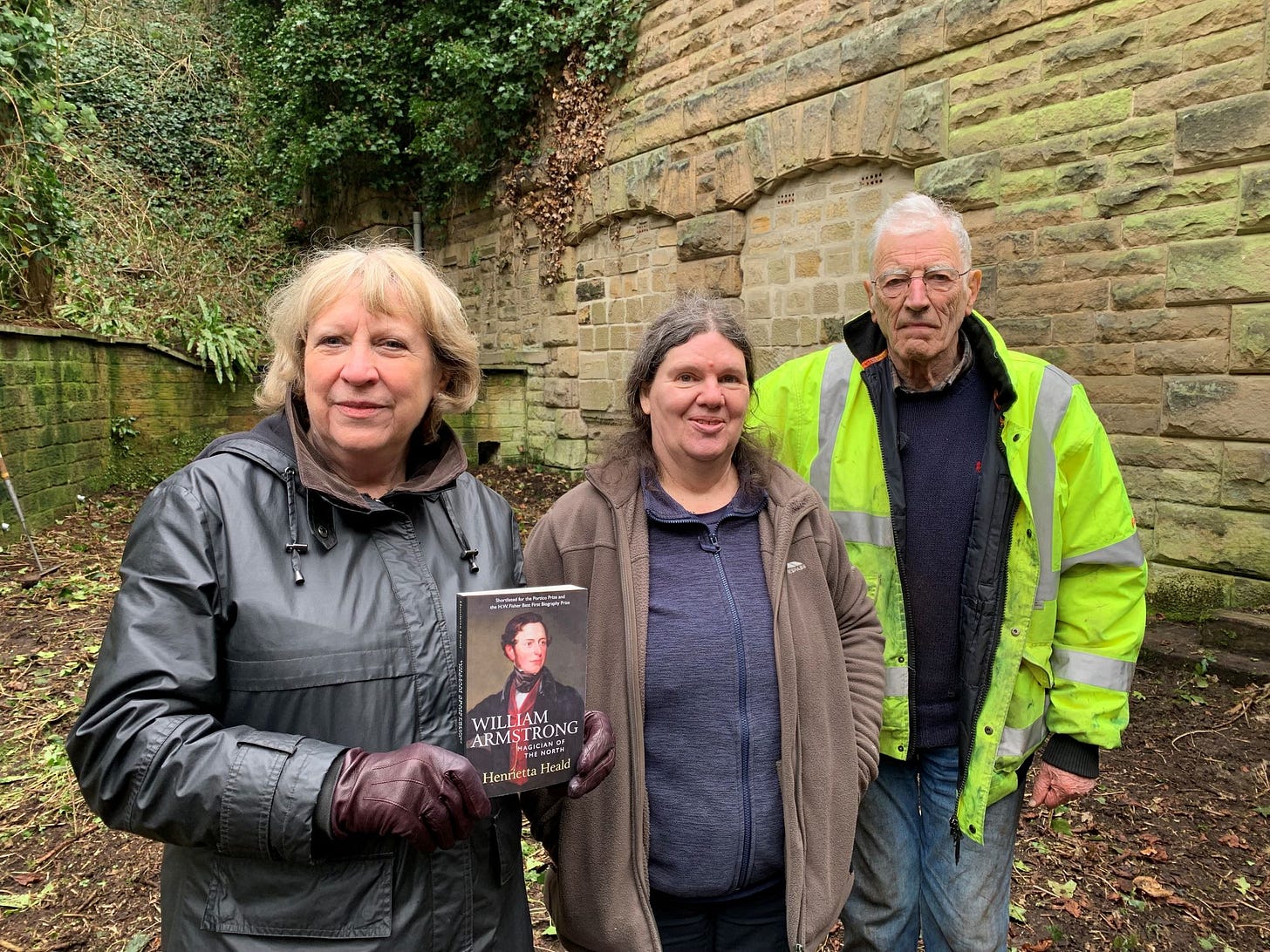
People from near and far are taking a close interest in the grade II listed Banqueting Hall in Jesmond Dene, a notable building with a chequered history.
In 1883 it was presented by Lord Armstrong to the city of Newcastle – along with the whole of Jesmond Dene – who stipulated that it should be used in connection with the arts, science, literature and education.
A faded plaque on the wall (attributed to Tyne and Wear County Council, abolished in 1986) marks the centenary of the handing over and informs us that it was built in 1860-62 by the then Sir William Armstrong for entertaining.
John Dobson was the architect of the now roofless Banqueting Hall while Norman Shaw is credited with the adjoining Lodge and other later additions to the building.
For a long time it has had an air of gothic mystery but Heras fencing, erected in the wake of one of the recent named storms, smacks of sad decline.
The fencing blocks access to the footpath that runs behind it and up to the ruined St Mary’s Chapel, itself marked by a Tyne and Wear County Council plaque noting that this Middle Ages ‘place of pilgrimage’ was ‘returned to Newcastle’ as part of Lord Armstrong’s gift of 1883.
It’s an area steeped in history – and its appeal extends beyond Jesmond and Tyneside, as became clear over a March weekend when a volunteer working party cleared away encroaching weeds and brambles.
Tools and insurance cover were provided by Newcastle City Council, which has taken back control of city parks from the charity Urban Green, but the initiative came from The Armstrong Project whose driving force is Henrietta Heald, biographer of Lord Armstrong.
“This iconic building, gifted to the people of Newcastle by Sir William Armstrong, is destined for a new life under the auspices of The Armstrong Project which seeks to ensure that it is openly accessible and restored for the benefit of everyone,” stated the call out to volunteers.
On site Henrietta spoke of her aim to establish The Armstrong Project as a charity able to lease the premises from the council and set about raising funds to get the building restored and functioning in accordance with Lord Armstrong’s wishes.
“The thing about giving Jesmond Dene to the people was that it wasn’t intended to be a grand thing. It was for the people who worked in the factories, to give them fresh air and exercise.
“The Banqueting Hall was built for tea parties for his workers but as time went on he also had friends and clients here as well. It was a knowledge hub where ideas could spark off each other.
“As The Armstrong Project, we’re thinking of maybe starting with the Lodge which would become the nerve centre to get the rest of the restoration project going. It would still need a lot of work but it would make the enterprise more manageable.”
One of those weekend volunteers was Peter Jamieson, London-based chairman of the Friends of Czech Heritage which gives grants to restore imperilled historic buildings in the Czech Republic.
Among those the Friends were working with, he said, was the factory where German industrialist Oskar Schindler (made famous in the film Schindler’s List) employed Jewish workers to save them from Nazi death camps.
An architect, Peter said he saw “potential” in the Banqueting Hall in Jesmond Dene.
“Most buildings have potential. It’s a matter of unlocking it.
“I wasn’t a conservation architect in my general practice but I became interested in it and have worked with the Society for the Protection of Ancient Buildings which has a great track record in doing this sort of thing.
“I’ve been a caseworker for them for the last 20 years.”
As for what kind of potential might be unlocked, he said best talk to artist Jennie Speirs Grant, so I did – and she gave me a tour of the building with all its nooks, crannies, gradients and air of faded grandeur.
It really is an extraordinary place, full of challenges for anyone attempting to bring it back into use as a fully functioning public facility for the 21st Century.
But Jennie and Ken Grant have been here for 40 years and are founder members of The Armstrong Studio Trust, an artist-led partnership which has long had an interest in saving the building.
Over the working party weekend they had just regained access after a period of upheaval during which a new fire alarm system was installed
Jennie remembered when she and other young artists, most of them recent graduates of Newcastle Polytechnic (now Northumbria University), were looking for studios where they could undertake sculptural commissions.
“We had contacted the council parks department and at one point they said something like, ‘Would you like to come and look at this shed?’ So we came and had a look round here.
“It was very atmospheric but had been empty for about eight years and was like the Marie Celeste. There was a cable running down the stairs with lightbulbs screwed into it and water pouring through the roof in various places.
“Everything seemed to be bricked or boarded up, with no real explanation. It was mostly pitch black but then we went through into the central hall and light was streaming in. It was fabulous.”
So you thought your search was over?
“We didn’t. We thought we’d be here for about a year but it took a long time to click that here was a square peg and a square hole.
“There were seven of us at that point and between us we had enough skills and impetus to get things sorted. I think we must have had enough of a structure for the parks department to take a punt but it was very informal.
“What really put the cat among the pigeons was that the parks department shrank and at a critical point, when we were about to fix the issue of the lease, a meeting with key people was cancelled.”
Jennie has heard stories of live music events at the Banqueting Hall in the 1960s and a night of wanton vandalism when things were smashed up. Complaints from local residents eventually put a stop to all that.
Then in 1977 the Banqueting Hall roof was removed, thereby altering its status to that of ‘controlled ruin’, and ancillary buildings including a boiler house, kitchen and gardener’s cottage were demolished.
All this is at odds with the admiring descriptions recorded by 19th Century diarist Thomas Sopwith, an early visitor to Sir William Armstrong’s Banqueting Hall, and repeated in Henrietta’s book, William Armstrong: Magician of the North.
Yet Jennie and Ken remained at the Banqueting Hall and have mounted many exhibitions there and organised many artistic outreach projects.
Jennie showed me the drawing and print room with its rudimentary insulation – “about the only place you can keep warm over winter” – and her own two- and three-dimensional artworks, inspired more often than not by the nature which is all around and often encroaches.
A green tendril has gained access to the lofty space once known as the Reception Room where, on a high gallery, a pipe organ once played. Typical of Armstrong, it was powered by water from a lake situated just below the current pond in Paddy Freeman’s Park, above the Dene.
It’s said it disappeared on that 1960s night of vandalism when statues were also destroyed.
Hundreds of artists have benefited from the work of the Armstrong Studio Trust which has hosted individual projects and in recent years collaborated with a like-minded London arts organisation, Fitzrovia Noir.
Pulling ferns from external stonework was another volunteer from outside the region, Maxine Reynolds, who with her husband owns Trinity Buoy Wharf in London where physicist Michael Faraday did experiments to optimise lighthouse beams.
(In 1846, when Armstrong was elected a Fellow of the Royal Society at the age of 35, Faraday was one of his sponsors.)
Maxine has a home in Venice where the last surviving example of a mighty Armstrong hydraulic crane is an attraction in the city’s Arsenale, so her interest in industrial heritage Lord Armstrong’s legacy is easily explained.
“I came up here to see an exhibition and thought it was fascinating. Trinity Buoy Wharf is now a place for the arts and cultural industries but it looked very much like this 25 years ago when we took it on,” she said.
“Faraday and Armstrong were similar in many ways, gifted and entrepreneurial men.
“I began to collaborate with Henrietta and Jennie and we’re taking this forward step by step, a little bit at a time, to see what we can achieve.
“There are lots of organisations and individuals who are interested in these things and we have formed this very informal collaboration with conservation architects in the UK, Italy and the Czech Republic.”
Through Maxine, the Banqueting Hall has also been visited by young Italian architects brought to Britain for practical experience on scholarships from the GeM Charity.
This was set up by Maxine’s friend, Italian restoration architect Laura Morgante, in memory of Gloria Trevisan and her fiancé, Marco Gottardi, young architects recently arrived in London who died in the Grenfell Tower fire of 2017.
The weeds removed, the Banqueting Hall volunteers dispersed and the Heras fencing was soon back in place in Jesmond Dene along with signs warning of a danger of falling masonry.
The work of Henrietta, Jennie and others will go on, as it has done for more than a decade. In the meantime, say Newcastle City Council: “We only took on the management of our city’s parks, allotments and green spaces at the end of February, including assets such as Banqueting House.
“A full review of the estate is still underway but we want to reassure concerned residents that all at the council recognise the historical significance of such assets.”
Henrietta Heald is giving a lecture at Newcastle Lit & Phil on July 21 (6pm) on the subject The Armstrongs and the Lit & Phil: A century of progress.





